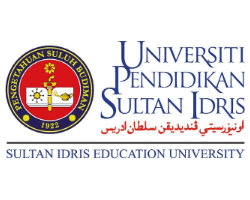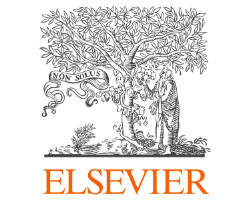Banjarese Cultural Traditions During Pregnancy and After Childbirth in South Kalimantan: A Semi-Qualitative Descriptive
Abstract
The matter of inequality in context of health status is reflected in the high differences in maternal mortality rates in several countries. Often health information is ignored because of differences in understanding the needs of women and their families. This becomes a communication barrier between health care providers and families in selecting and making emergency decisions that may arise during pregnancy, childbirth, and the puerperium. This study aims to describe the habits and traditions of women during pregnancy and after childbirth in maternal health care. This research uses descriptive analysis method with a case study approach. The study sample consisted of four postpartum mothers with criteria of normal conditions without complications since the third trimester of pregnancy, and the similarity of Banjar ethnic characteristics. The illustration of the results shows that four research subjects carried out the habits of the prevailing tradition, including self-perception; services received from attendants, places and types of care; taboo on food and medicine; suggestion about food and medicine; and rituals in the form of ceremonies and salvation prayers together with maternal health care from midwives, nurses at midwife clinics and Puskesmas. Our research findings confirm that Banjar people are accustomed to using cultural traditions that are integrated into their families and communities and health care services in available and affordable facilities in the area.
Downloads
References
C. Chukuezi, “Socio-cultural factors associated with maternal mortality in Nigeria,” Research journal of social sciences, vol. 1, no. 5, pp. 22-26, 2010.
Kementerian Kesehatan RI. “Pelayanan Kesehatan Ibu di Fasilitas Kesehatan Dasar dan Rujukan,” 2013.
S. Syamsuriah, “Traditional Medical Systems in Handling Children Diseases among Tolotang Community in Sidrap Regency South Sulawesi,” Hasanuddin International Journal of Health Research Sciences, vol. 1, no. 1, 2019.
L. C. Callister, M. N. Eads and J. P. Diehl, “Perceptions of giving birth and adherence to cultural practices in Chinese women,” MCN: The American Journal of Maternal/Child Nursing, vol. 36, no. 6, pp. 387-394, 2011.
M. Withers, N. Kharazmi, E. Lim, “Traditional beliefs and practices in pregnancy, childbirth and postpartum: A review of the evidence from Asian countries,” Midwifery, vol. 56, pp. 158-170, 2018.
Y. Agus, S. Horiuchi S, S. E. Porter, “Rural Indonesia women’s traditional beliefs about antenatal care,” BMC research notes, vol. 5, no. 1, pp. 589, 2012.
V. Şenol, D. Ünalan, F. Çetinkaya, Y. Öztürk, “Kayseri İlinde Halk Ebeliğiile ilgili Geleneksel Uygulamalar,” Klinik Gelişim, vol. 17, pp. 47- 55, 2004.
M. T. Işık, M. Akçınar, S. Kadıoğlu, “Traditional practices applied to mother and newborn during pregnancy, labor and postpartum periods in Mersin,” Uluslararası İnsan Bilimleri Dergisi, vol. 7, pp. 63-84. 2010.
M. J. Renfrew, A. McFadden, M. H. Bastos, J. Campbell, A. A. Channon and N. F. Cheung, “Midwifery and quality care: findings from a new evidence-informed framework for maternal and newborn care,” Lancet, vol. 384. 1129-1145, 2014.
J. Andall, D. Devane, H. Soltani, M. Hatem and S. Gates, “Improving quality and safety in maternity care: the contribution of midwife-led care,” J Midwifery Womens Health, vol. 55, pp. 255-261, 2010.
Sekretariat Negara, Peraturan Pemerintah Republik Indonesia Nomor 103 Tahun 2014 tentang Pelayanan Kesehatan Tradisional, 2014.
F. Hurrahman, “Upacara mandi hamil dalam pandangan masyarakat Banjar,” 2008. [Online] Available: https: //udhiexz.wordpress.com/2008/05/27. [Accessed: Dec. 12, 2022].
A. Faizal, L. Arianti, “Persepsi Masyarakat Banjar Terhadap Kapuhunan,” Psycho Idea. Vol. 16, no. 2, pp. 89-98, 2018.
E. Suprabowo, “Praktik Budaya dalam Kehamilan, Persalinan dan Nifas pada Suku Dayak Sanggau, Tahun 2006. Kesmas: National Public Health Journal, vol. 1, no. 3, pp. 112-121, 2006.
R. V. Garvita, “Pemanfaatan Tumbuhan Obat Secara Tradisional untuk Memperlancar Persalinan Oleh Suku Dayak Meratus di Kalimantan Selatan,” Warta Kebun Raya (Semi-Popular Magazine), vol. 13, no. 2, pp. 51- 58, 2017.
M. R. Fauzan, C. K. Dahlan, N. A. Taslim, A. Syam, “The effect of giving fish extract (Pujimin Plus) on intake of protein and hemoglobin hypoalbuminemic patients,” Enfermería Clínica, 2020.
M. A. Shamaki and A. Buang, “The socio-cultural Behaviours of Women’s health facilities utilisation in northern Nigeria,” Mediterranean Journal of Social Sciences, vol. 6, no. 4, 517, 2015.
M. Ahmed, M. Demissie M, A. Worku, A. Abrha and Y. Berhane, “Socio-cultural factors favoring home delivery in Afar pastoral community, northeast Ethiopia: A Qualitative Study,” Reproductive health. Vol. 16, no. 1, pp. 1-9, 2019.
H. Nur, A. Ridwan, T. L. Atik, S. Muhammad and Megawahyuni, “Makassar ethnic community perception about pre-eclampsia: A study phenomenology,” Enfermería Clínica, vol. 30, pp. 475-477, 2020.
R. Adrianto, A. Razak and M. A. Maidin, “The Accessibility of Health Services for Multiethnics Community Towards Universal Health Coverage in Samarinda City: A Qualitative Study,” Indian Journal of Public Health Research & Development, vol. 10, no. 10, pp. 1363-1367, 2019.
R. Amiruddin, S. Palutturi and A. R. Stang, “Increasing midwifery skill for pregnancy health care with ammuntuli bija tianang na Beja-Beja model,” Indian Journal of Public Health Research & Development, vol. 9, no. 9, pp. 364-368, 2018.
W. Emmamally and P. Brysiewicz, “Families’ perceptions of support from health care professionals in the three emergency departments in KwaZulu Natal, South Africa,” International Journal of Africa Nursing Sciences, vol. 10, pp. 5-60, 2019.
Y. Widodo, S. Amanah and N. K. Panjaitan, “The Infuence of social economic and cultural factors on childbirth behavior in rural area with high and low maternal mortality ratio,” Jurnal Kesehatan Reproduksi, vol. 8, no. 1, pp. 77-88, 2017.





















